Astatic Corporation
In 1930, two amateur radio operators, Creed M. Chorpening, W8WR (later W8MJM) and F.H. Woodworth, W8AHW began experimenting with different types of microphones for their "ham' stations. Their mutual friend, Charles Semple, worked for Brush Development Company where he had been experimenting with Rochelle salt crystals. Semple demonstrated some crystal pick-ups that Brush was working with, leading Chorpening and Woodworth to found The Astatic Microphone Laboratory, Inc. in Youngstown, Ohio in 1933. Semple was brought into the company as general manager to manufacture and market the company's model D-104 Crystal Microphone as well as other crystal microphones, crystal phonograph pickups and recording heads. In 1944, Astatic moved operations to Conneaut, Ohio and supplied microphones, pickups and crystal cartridges as well as hydrophone and Sonar devices to the military during World War II. After World War II, Astatic Microphone Laboratory became The Astatic Corporation.
The commercial audio product division of Astatic became CAD Professional Microphones in 1988. After a merger with Omnitronics LLC in 2000, CAD, Astatic and Omnitronics combined under the CAD Audio brand. The company offers audio products for recording, live performance, commercial and personal audio, and is located in Solon, Ohio.
In 2012, the Citizens Band (CB) product division of Astatic that had been acquired from Omnitronics by Barjan LLC in 2006 was sold to DAS Companies, a communications product distributor for interstate truck stops. DAS expanded the Astatic name to non-microphone accessories including coaxial cables, meters and antennas.
Astatic also manufactured bullet style microphones, which are extremely popular among harmonica players. The original Astatic model JT-30was introduced in late 1939. There were many variations in different colors such as the Jt-30-C, W-30, 31, Jt-40, Jt-50, and Model A. It is one of the most popular microphones for blues harp players. Production of the mic continued in different versions such as the JT-30VC and the CAD HM-50 that were marketed to harmonica players before being discontinued in 1999. In 1999 Hohner bought the molds to the Jt-30 shell and Astatic's very last batch of crystal elements and it was sold as the Hohner 1490 Blues Blaster. The Blues Blaster elements were Astatic MC-151 Crystal elements until 2001. Later versions of the Blues Blaster used a Japanese element. The Astatic Jt-30 Roadhouse was the same as the Blues blaster except with a different connector. Both microphones were discontinued in 2013 marking an end of production for the Jt-30 after 74 years. The Jt-30 is still popular among harmonica players. It was lightweight, cupped in the hands easily and distorted the sound when run through a Tube Amplifier. The Jt-30 was used by, Little Walter, Big Walter Horton, Junior Wells, Carey Bell, George "Harmonica" Smith, William Clarke, Gary Primich, Kim Wilson and countless others. Many players modify them by putting in Shure Controlled Magnetic Transducers after the original elements fail
D-104 microphone

Vintage D-104 microphone head
Introduced in 1933, the Astatic model D-104 became known for its high frequency response that contributed to better communications audio quality. Early D-104 mikes used a 1" thick case, a large ID tag, and holes for "ring & spring" mounts. The design was modified in April 1937 with smaller tags and reduced thickness. A black "grip" switch stand ("G" Stand) with a metal ID tag was manufactured in January 1938. A solid-state amplifier was incorporated into the "G" stand in the 1960s. A US Bicentennial model D-104 was manufactured in 1976 featuring an eagle and shield design on the back plate, as well as a chrome base. There was also a gold (in color) version with the eagle on the back plate. There were other variations, but production ceased in 2001 The D-104 is often used by CB radio hobbyists and vintage amateur radio enthusiasts as part of their operating activities.
More - Preservation Sound • Antique Outings
Astatic mics in our collection


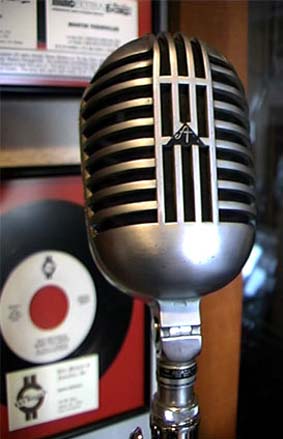

Astatic Ads
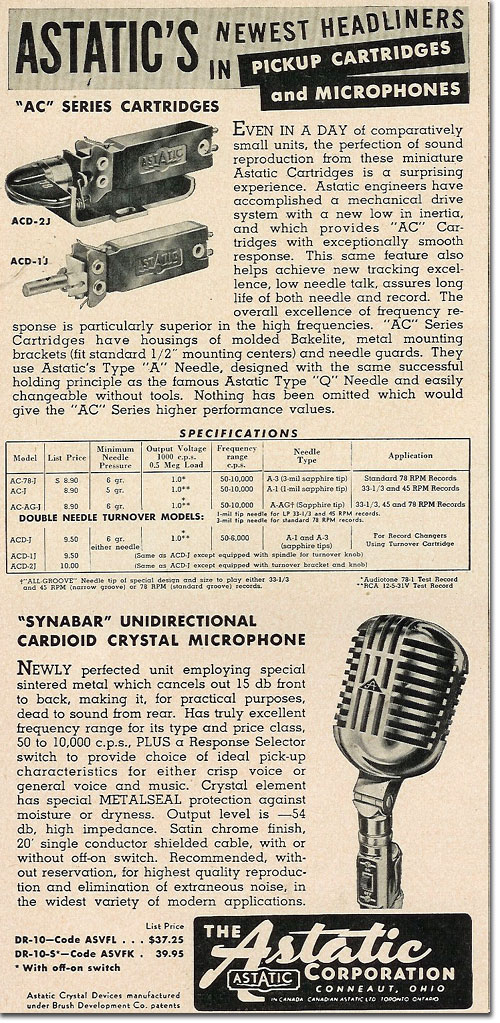
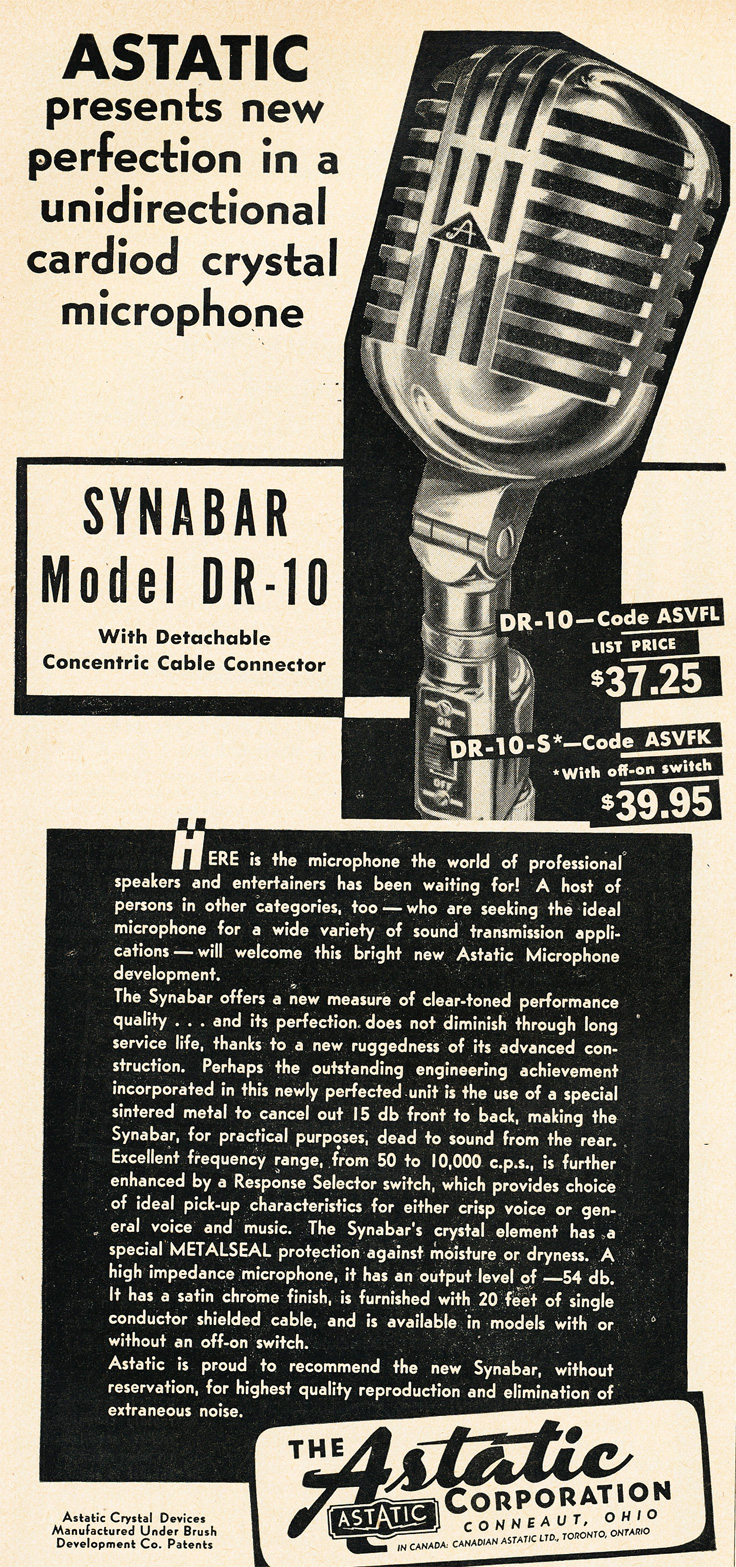
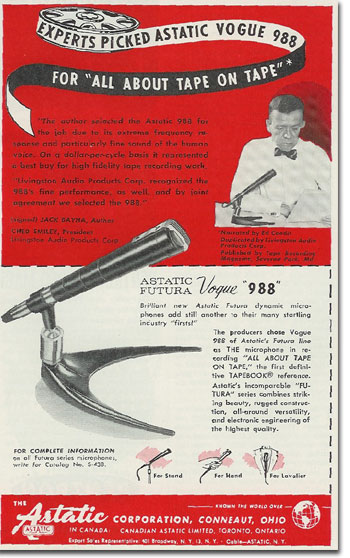



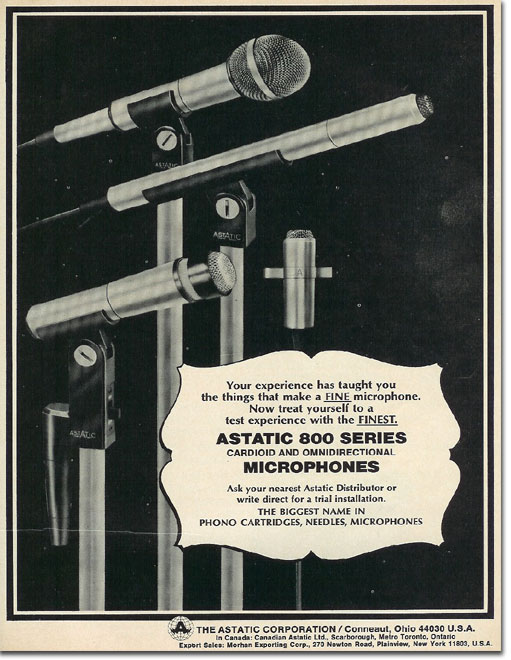
The non-profit Museum was dissolved on December 31, 2017. Donations are NOT tax deductible and are now processed by Phantom Productions.
All donations to MOMSR go 100% to support restoration of vintage magnetic recording devices in the private collection and help fund the web site development and hosting.

